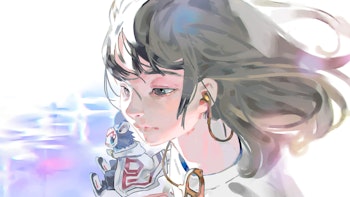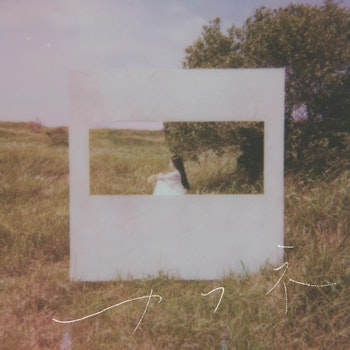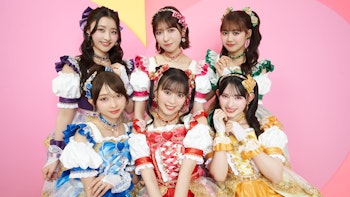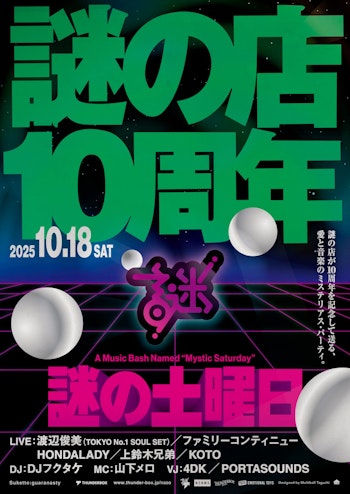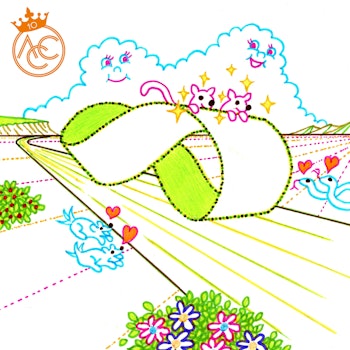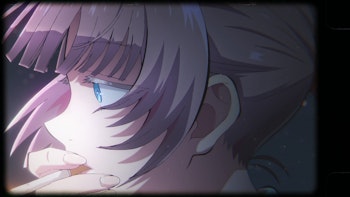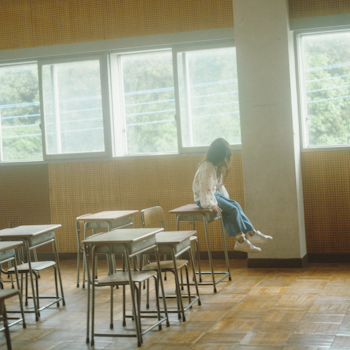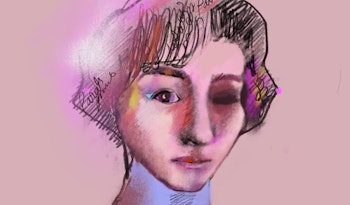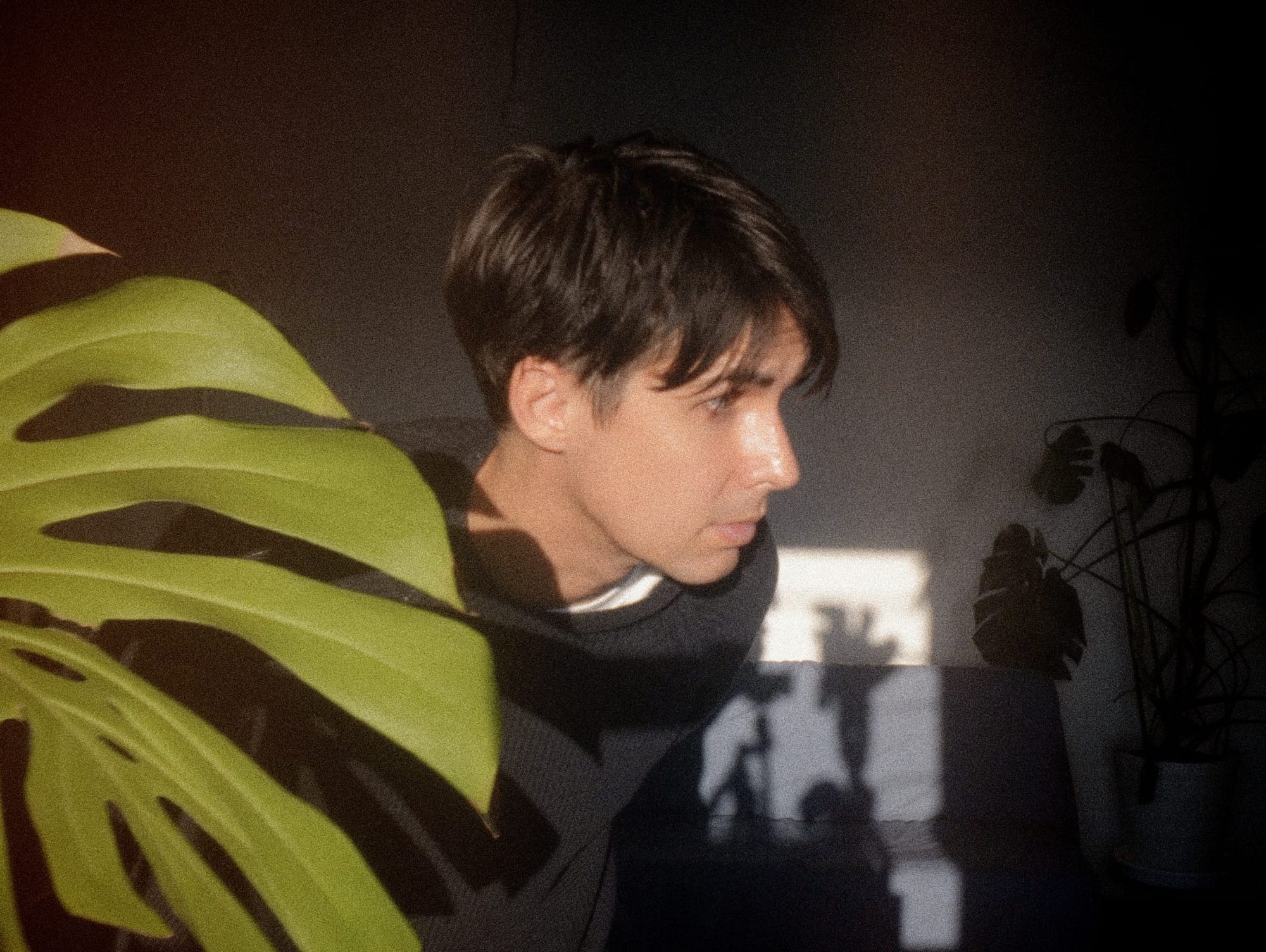
A party inspired Nagoya electronic project Lullatone’s latest album. This one, however, played out inside a florist.
“It’s the best smelling concert you’ll ever go to, because the whole room has a natural smell,” Shawn James Seymour, the driving force behind Lullatone, says from his studio in Aichi Prefecture of Flower Listening, an event held sporadically at local flower shop Tumbleweed. The owner of the establishment approached Seymour about starting an ambient-leaning party, and the 43-year-old musician helped make this bloom into a reality offering a unique live experience.
“You know, when you go to a typical live house, sometimes they have that gate in front of the stage. It's the exact opposite of that. Everyone's like, squished up right on each other, sitting around and talking,” he says. “So it felt like just being with a big group of friends, even though I didn't know 70% of the people there before that date, but suddenly we felt like a big group of buddies.”
The Flower Listening experience lingered in Seymour’s head, and he started creating songs that he thought would sound not only good at the party, but within Tumbleweed itself. The resulting album Music for My Friend's Flower Shop finds Lullatone cultivating a set of songs split between synthesized and acoustic melodies, inviting enough to soundtrack the inside of a store but packed with sonic detail to draw in homebound listeners.
It’s a fitting backdrop for an album from an artist long creating playful electronic songs inspired by the everyday. Formed in the early 2000s by Seymour and wife Yoshimi, Lullatone’s earliest works took form via primitive computer software (2003’s hoppy-poppy loop set Computer Recital) and then incorporated more organic touches alongside the digitized (2006’s Plays Pajama Pop Pour Vous). Since they’ve zeroed in on finding the beauty in the mundane, whether that be Elevator Music, Soundtracks for Everyday Adventures or Music for Museum Gift Shops.
In recent years, Yoshimi has taken on a less prominent role in the project, but Lullatone carries on creating melodies capturing the sweetness of the familiar, and the potential that enjoying yourself can bring.
“I think a lot of electronic music can be…fun isn’t the point of it. It’s interesting to listen to. But it’s not ‘fun’ on purpose,” Seymour says. “It’s not a knock against those who aren’t aiming for that, but it’s a goal for me.”
In this interview, scrmbl catches up with Seymour to talk Music for My Friend’s Flower Shop, digital music and the perils of Reddit among much more. It has been edited for length and clarity.
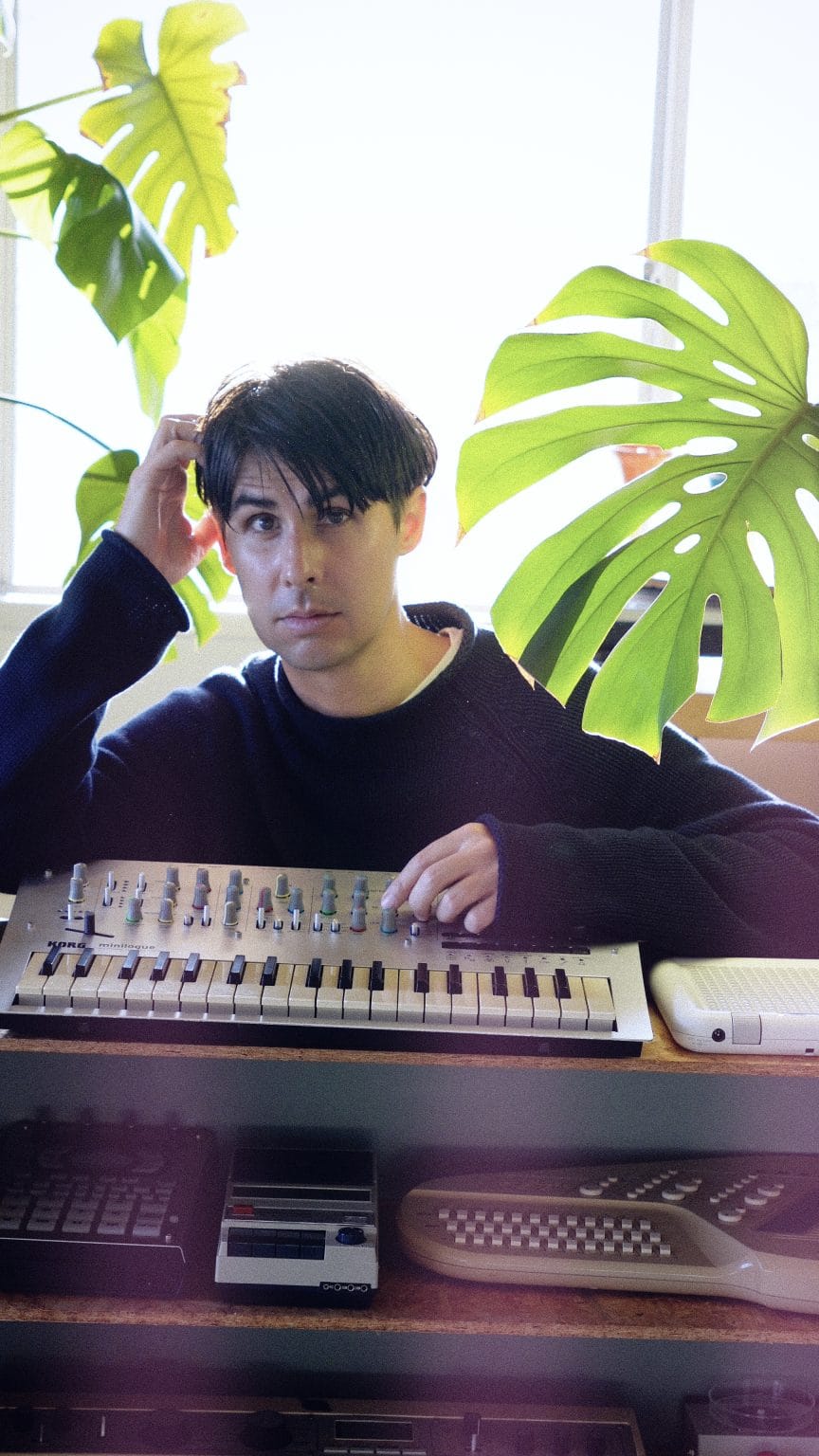
scrmbl: I wanted to start by learning about your history with gardening. Is that something you’ve always been into, or something that you became more curious about later in life?
SHAWN JAMES SEYMOUR: I never thought about it until just now, but my first ever job was cutting grass, like for all the different old ladies in the neighborhood. So I had a green-thumb kind of thing, of making sure I watered people's grass and cutting their grass and doing a little bit of landscaping. Nothing crazy like actually choosing the right flowers, but making sure that they looked really nice and stuff.
Then, after moving to Nagoya…we live in a house now, and it has, like, a really small backyard. So in the backyard, every spring, my daughter and I buy a bunch of flowers and plant them under some trees. It’s fun to watch. It's fun to watch them grow, and then they kind of fade away. You know? It's just like a story of a season. Where they are in our backyard totally faces the table where we eat breakfast. So it makes breakfast so much better if there's just a little splash of color here and there.
Having said all that, though, the grass part of our backyard now is just Astroturf [laughs]. It's hard to make the grass grow. I struggled with it for like, 10 years, and it just kept getting worse. And when the kids were little, it would always get so muddy, and then they’d drag mud all through the house. We switched to fake grass, and that ended up being a good call.
[laughs] I could imagine the house is in a much cleaner condition now.
Because of that, I have one section of the backyard that is like, all real stuff. We have three trees and a bunch of flowers. A few other trees and planters with stuff in them, to offset the fake grass. It’s actually kind of like the album itself. A mix of synthesized tones and real-life tones.
That’s a great transition to Music For My Friend’s Flower Shop. The flower shop in question is Tumbleweed in Nagoya. What’s your history with that store?
So right now, I'm part of a Sunday morning running club. Like, very very loose running club. So it's like a group of graphic designers, restaurant owners and other people doing things around town who are meeting up at 8 am in one park and run near Nagoya Castle. There's a park next to it called Meijo Park. We run three laps around there. But we're all like, so hungover [laughs]. It's not like a really hardcore running club, like you see on Instagram and stuff. A lot of times it's a bunch of graphic designers…I might be the only musician…and people who own bike stores, who were like, probably out drinking together six hours before the event and then showing up, not looking so hot, and running slowly.
One of the guys in that crew is Kotaro Imoto, the guy who runs Tumbleweed. He’s been like a really good graphic designer here in Nagoya and his wife is a florist. I think they teamed up about 20 years ago to do Tumbleweed together. So he does flowers with her now, but really she’s the one primarily in charge of choosing the flowers in the shop, while he does the designs for their merch. They also have a gallery space where they bring in lots of interesting illustrators from mainly around Japan. Like Tacoma Fuji Records and Jerry Ukai.
One day Kotaro was telling me while we were running “I kind of want to start doing concerts here, like ambient concerts.” I said let’s do it. We set the first one up two years ago. He decided to call it “Flower Listening,” because music in the flower shop. It’s the best smelling concert you’ll ever go to, because the whole room has a natural smell. Like flowers and leaves, a sweet-and-sour mix that I love. I played the first one, and since then I’ve been a bit of a curator for it, kind of serving as a liaison for artists playing there. We’ve only done three so far though [laughs]. It’s not like a huge thing, Tumbleweed is usually super busy doing flowers for weddings and other events. We have to choose the right Sunday to do it.
What are your memories of performing at the first one? What was the room like?
I don't organize many events. I play concerts a lot, but I'm not usually an organizer. For that one, I wasn't really the organizer, but I felt a bit like the host. So the first bit of it was interactive, like we had a DJ going, and then I had some instruments set up, like connected to different flowers, and if people would touch some petals on the flowers, it would trigger a synthesizer to make a sound. So that was sort of going on before the concert started. And I think because that was already happening, when I started actually playing, it was really, really familiar. It felt like everyone was on the same team. So there's not a divide. You know, when you go to a typical live house, sometimes they have that gate in front of the stage. It's the exact opposite of that. Everyone's like, squished up right on each other, sitting around and talking. And I could talk without a microphone, even, like, if I just wanted to talk to somebody. So it felt like just being with a big group of friends, even though I didn't know 70% of the people there before that date, but suddenly we felt like a big group of buddies. I think because everything was so comfortable with the flowers and curry on sale and the kind of music we were playing.
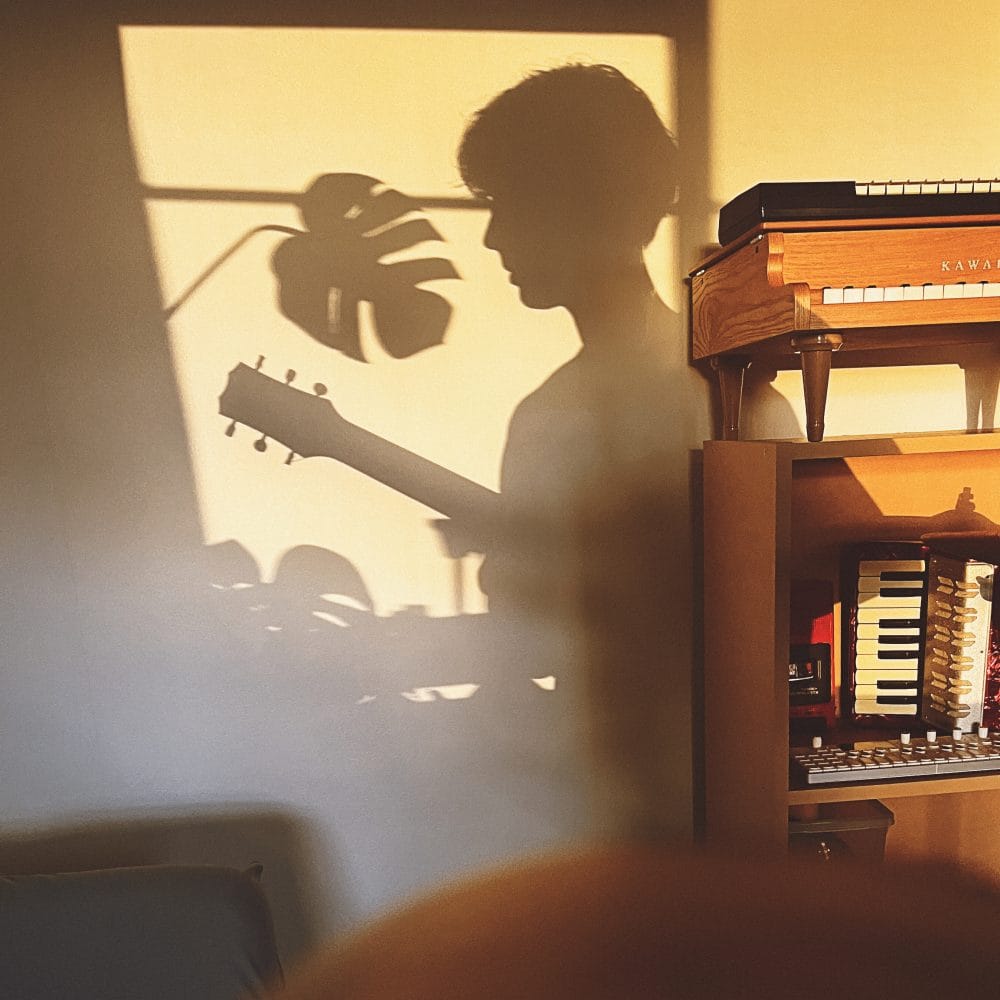
What you're describing really reminds me of Lullatone’s whole body of work and the new album. It sounds cozy and intimate.
Since the first one, I’ve DJed between acts rather than play. I ended up making more and more new songs to DJ, like “ahhh this is going to sound good at Flower Listening.” I ended up having enough songs where it felt like…this is the start of an album. Once I had the idea, I made it with Tumbleweed in mind. What would be good background music for here? I don’t know if they’ll use it as background music all the time [laughs], but that was the inspiration. What would sound nice in that situation.
What was the actual timeline of putting together Music for My Friend's Flower Shop?
So from the idea popping up until it was all the way done…I would say the recording and stuff, about a year. Even though the songs sound purposefully rough, it’s pretty intentional [laughs]. This album had a lot of re-edits, more than most Lullatone albums. I really wanted certain things to sound a certain way. Sometimes it’s hard to make something sound effortless. You have to go back and fix the parts that are too good [laugh]. Compared to other albums, this one took longer to make.
Oh, that’s really interesting.
I wanted it to not be too polished sounding. Today, it’s so easy to make things sound really clean. Everything is digital and now with music applications, they’re prompting you “do you want to use AI to clean up this tone?” “Let us use this AI assistant to remaster the EQ.” It’s kind of hard to fight all those urges and make something that sounds peculiar and intentional. Because of that and maybe just getting older, I took the time to just redo things over and over.
What’s an example of having to re-edit a song many times on the new album?
The fifth song on the album, “Lazy Weekend.” I recorded the guitar part for that one five years ago, and I’ve been saving it for a long time. The guitar wasn’t in standard tuning, and I don’t really remember how I did it. Instead of just figuring it out again, I kept trying to affect this recording from five years ago and make all the new elements fit with that. I think in between then, I had transferred it to cassette tape, and then cassette tape to computer. That was the only recording I had left. So it has this guitar that has gone through several iterations and left to marinate in its own juices for five years. Then I could add in the other parts.
It’s so subtle, but one example of that is at the very end, the guitar kind of changes. Over the last minute, the guitar slowly fades in with this reverb, it’s kind of a room-type reverb. If you listen on headphones and you focus really closely, it feels as though it is in a room and the guitar is slowly going backwards away from you while all the other instruments fade in. This was the missing element. It was like “how am i going to end this?” It was flat the whole time, and figuring out that small thing — the guitar fading away, like the way the weekend fades away, as some other elements comes forward.
The guitar part came about sometime during COVID. Yoshimi was just sitting at the table, shopping online. Very boring stuff. I had my camera set up on a bookshelf, and was keeping a memo of sounds I like. My phone is so full of voice memos of sounds I like. So I made that, but I was also looking at her looking…really bored [laughs]. That’s where the title comes from.
You mention this huge archive of sounds you’ve created over the years. Are you constantly revisiting what you’ve done and seeing how they work today?
Oh, yeah! I have hundreds of things like that. They sound good at the time, but they don’t have a house, a place where they can fit. For example, I went to that guitar part because I needed something that wasn’t all keyboards. I really wanted this album to feel like a playlist, or maybe more like a mixtape. I didn’t want every song to sound the same, to use the same instruments. If you are in a store, different things are going to happen. I wanted a synthesizer song, a guitar song…some other kind of weird sounding song [laughs]. Ambient track. I wanted to keep a flow going. So I needed a guitar track, and I found that recording and it was the perfect segue. I’m always doing that, going back to these hundreds of snippets of ideas and figuring out if there’s a new home for them somewhere else.
Something that really stuck with me the first time we talked was the importance of keeping the creative process fun. You don’t want things to become routine or boring. What were some of the more fun approaches you took for this album?
So there’s this KORG keyboard analog synthesizer, called a Minimoog [holds up instrument to camera]. I think it’s from 2015? It’s not super new, but also not that old. Before working on this album…all of the knobs on it were black. Nothing but black knobs. I switched them out to be these colorful knobs. Just doing little things like this makes the process more fun. It’s also a bit more tactile. All of these knobs have little grooves on them, so you can feel it more in your fingertips. But making it look a certain way kind of changed the way I play. When all the knobs are black, it felt a bit more serious. It’s a really good synthesizer, like a serious one, but making it look a little happier and brighter made me feel like I could play happier, brighter melodies with it.
One time I put a picture of it on Reddit, like “I switched the knobs on my synthesizer.” I got so roasted by those nerds! [laughs] “Why would you do that!?”
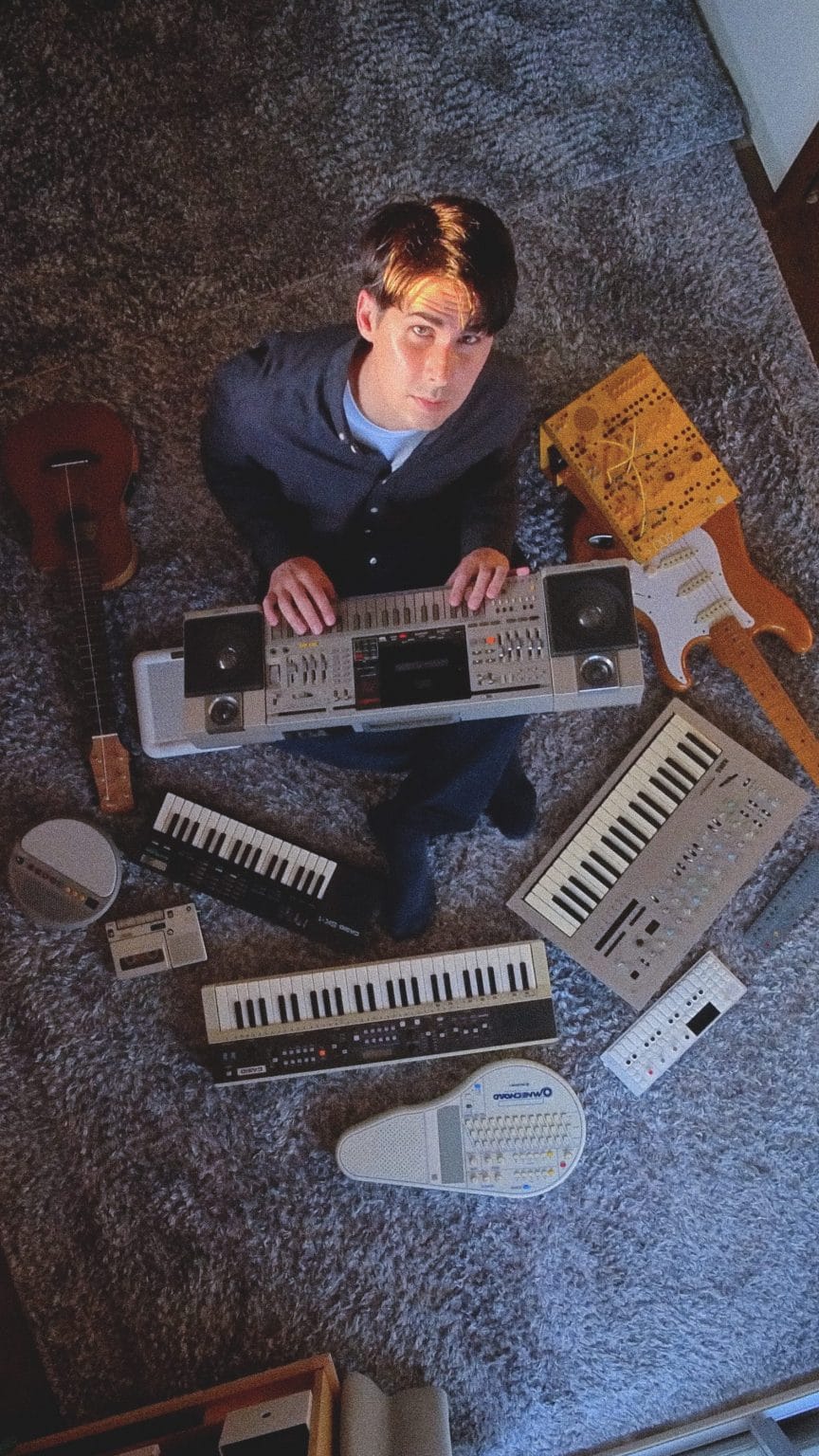
[laughs] What subreddit was this? Like r/synths?
Probably, yeah. It was a while ago. I realized “oh this is not the community for me.” [laughs] For me it was about visual representation and the tactile feel. But for them it was like “no way, you made it look like a toy!”
Oh man, Reddit destroyed you.
I love that story though, it’s on brand for both me and Reddit [laughs].
So you had mentioned earlier about your desire to have a balance between the synthesized and the analog in your recordings. I wanted to focus on the first half of that. What’s your relationship with digital and synthesized music today? Especially at a time when it’s changing so quickly, with AI being incorporated into so many programs.
I still haven’t used AI. I know at some point probably everyone’s going to have to, but I’ve been able to hold out. I’m just not interested in it right now. Before, it was a little more like “I’m not going to.” Now it’s like…inevitably I probably will, but for now I’m not, I don’t feel like it. But with digital things…I use Ableton everyday. I love it, it’s one of my favorite things in the world. What I love about programs like that is you can sculpt your own sounds, synthetic or something recorded from outside. I like that feeling, making something a little bit dirty.
Sounds right now are amazing. If you love high fidelity, high spec tones, we are living in a golden age of being able to make things. It’s not my favorite kind of thing to listen to, but I’m impressed when I hear it. Like, I don’t know a ton about dubstep, but when I hear it I think “that’s an interesting sound.” I don’t listen to it a lot [laughs] but I can appreciate it.
I have a playlist I go back to a lot called “Recording Palette Memos,” which is pretty much all ‘60s and ‘70s tracks [laughs]. I like how round and kind of loose things sound. I also listen to a lot of ‘90s guitar rock too, like Pavement and post-Pavement stuff, but I like electronica and that kind of stuff too.
I saw recently you were showing off Paul McCartney’s McCartney II on Instagram.
Yes! You have to go to the b-sides! The main part is crazy too…I’ve been looking for that record for years, and this weekend it popped up in a used record shop in Nagoya. There’s one song called “Secret Friend” on there that’s like…almost sounds like Four Tet or something [laughs]. Paul McCartney alone with modular synthesizer and cool drums. I love that album, and everything he’s done.
That one feels like it’s capturing a very similar approach to what I do, and surely lots of other musicians too right now. Just totally a dude messing around in his room, trying to make the weirdest sounds possible, and then make a song out of it. I didn’t think about it until now, but maybe that’s why I like it. A lot of ambient music is about making a special sound and letting it flow for like 10 minutes. That’s the whole thing. I have a little bit of whatever McCartney has, where even if I make a cool sound, I don’t have the self-confidence to let it flow. I’m going to try to turn it into a song, make a melody out of it. Actually, McCartney can do whatever he wants [laughs]. I can’t let something flow too much.
What does Lullatone live look like in 2025?
Yoshimi doesn’t play concerts anymore, as she’s not interested in that stuff. So it’s just me. I have a robotic drum kit, and on top of that I’m playing guitar and a variety of small synthesizers. I can play songs from the albums — a lot of electronic artists can get up and doodle, noodle around for like 30 minutes. I’m not really good at that, probably because I come from a band background. I try to play songs. There’s times I try to experiment in real time though, although it tends to stay melodic and nice.
Recently this company gave me a prototype of an instrument they made that looks like a turntable. It’s called the Orbita. You put these magnets on it, and everytime it passes under the sensor, it triggers a MIDI note that goes to a synthesizer. I took this to a recent show in South Korea, and at the end of the show I was making a loop, and I gave each person in the audience one of these magnets. They added it to the Orbita, and it became an interactive composition. Everyone’s magnets were coming together to change the loop. It’s something to make it special and fun.
I think a lot of electronic music can be…fun isn’t the point of it. It’s interesting to listen to. But it’s not “fun” on purpose. I try to have some fun parts too. It’s not a knock against those who aren’t aiming for that, but it’s a goal for me.
My last question for you is…seeing as this new album was inspired by their flower shop, what did the owner of Tumbleweed think of Music For My Friend’s Flower Shop?
I was pretty nervous! Before I put it out, I wanted to make sure that he liked it. Within an hour of me sending it to him, he wrote “I love it!” That was a huge relief. If he had said “I hate it,” I would have had to decide “do I trash this or change the name of it, because I like the songs a lot.” [laughs] He actually ended up doing the artwork for the cover, and since then we have been hanging out even more. He was really busy over the last season, as it’s the most busy one for florists — graduations, Mother’s Day, people starting new jobs. So he hasn’t been to run club in a bit, but I’ve visited his store a lot lately.
Lullatone performs several dates this month in Japan, listed below:
- Harunoame Cafe & Records, Tokyo, June 7
- Esquina, Chichibu, Saitama, June 8
- Baroom, Tokyo, June 14
- Tete Curry Nagoya, Nagoya, June 21
- Club Daphina, Osaka, June 22
